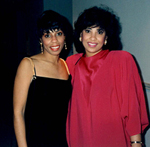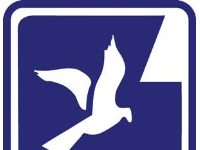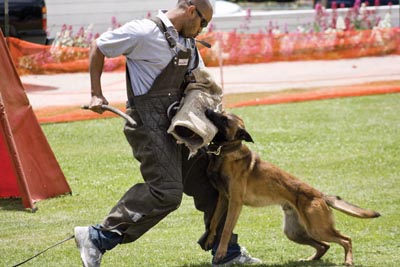
Study looks to pinpoint genetic, environmental causes of breast
cancer
Growing up on the East Coast, Donna Castleberry and her sister,
Gail, did everything together. They shared a bedroom in their
Massachusetts home and after college moved first to New York
together, then to Los Angeles. The two were inseparable and shared
everything with each other. Gail was freelancing in her sister’s
office the day she got the news that she had breast cancer.
Study looks to pinpoint genetic, environmental causes of breast cancer
Growing up on the East Coast, Donna Castleberry and her sister, Gail, did everything together. They shared a bedroom in their Massachusetts home and after college moved first to New York together, then to Los Angeles. The two were inseparable and shared everything with each other. Gail was freelancing in her sister’s office the day she got the news that she had breast cancer.
“For my sister and I, we did everything right,” Donna said. “We went for yearly mammograms. She went in January [2001] and in October this happened.”
The illness is one of the few experiences the sisters did not share in common, though Donna accompanied her sister through chemotherapy and radiation treatments, and it is the reason Donna is eligible for the Sister Study.
“We don’t know why it happened,” Donna said. “We didn’t have a family history so that’s what makes it very frustrating.”
The Sister Study is a national study that is sponsored by the National Institute of Environmental Health Services, a National Institute of Health of the U. S. Department of Health and Human Services. The study was started in October 2004 and has a goal of recruiting 50,000 women to participate in the study by the end of the year. Participation has been low throughout the Central Coast in California, including San Benito County.
So far 37,000 women have enrolled, including Donna.
“I was watching the ‘Today Show’ and they mentioned it when it first came out,” Donna said. “I knew immediately I had to do it. I went online to MSNBC and pulled up the information and called.”
Unlike other medical studies, the Sister Study is less intrusive. The research is based mostly on questionnaires about family history, medical history and lifestyle. A clinician also visits the participants early on to draw a sample of blood, urine, toenail clippings and dust from the home. Each year, the participants will receive a follow up questionnaire inquiring about changes to her lifestyle or health.
“Compare that to what her sister went through and you can’t even put a number on how much time she spent at a doctor’s office or in chemotherapy,” said Lourdes Suarez, a recruiter for the study. “The women don’t have to go to a doctor or a clinic. It’s all done at her convenience in her home.”
Those eligible for the study are women who have not had breast cancer but who have a sister who has had breast cancer, whether her sister is in remission, still in treatment or has died. Women in the United States and Puerto Rico between the ages of 35 and 74 are eligible to participate.
“We still need minority women to take their place,” Suarez said. “While 37,000 is a lot – we’ve done a great job recruiting – we still need African-American, Hispanic, Asian, Pacific Islander, Native American and women over 65.”
The day that Donna’s sister finished her chemotherapy and radiation treatment, the pair took the day off from work. They went shopping and for lunch at the Santa Monica pier – the two lived together in Los Angeles – and enjoyed the day. Three months later, they received the news that Gail’s cancer had metastisized to her liver.
“The wind was taken out of us,” Donna said. “We said ‘It’s one more hurdle. We are going to get through it.’ But that just wasn’t meant to be unfortunately.”
Gail died two years after she was diagnosed with breast cancer. She was 46.
“Unfortunately, with many African-Americans, [cancer] is much more aggressive,” Donna said. “I don’t know the reason for that and I want to know the reason for that.”
Trying to understand the influence of ethnicity on cancer is one reason Donna signed up for the study, as well as her hope that other families won’t have to endure what she and her sister went through.
“I don’t know if it’s environmental. I don’t know if it’s genetic,” Donna said. “I am hoping this will help in some way.”
Donna encourages other women to sign up for the study – and spreads the word about the study whenever she has an opportunity.
“People will say, ‘Oh well, I don’t have a sister who had cancer,’ but you may know someone,” Donna said. “Don’t assume you don’t know anyone because it has touched a lot of lives.”
While signing up for the study might seem daunting to some, Suarez said the amount of time spent on the study equates to about five hours of time over the first few months of participation and then a short follow-up once a year after that. One of the hardest parts for some participants is thinking back on their lives.
“They kind of have to walk down memory lane,” Suarez said. “We ask about her family history – not just about her sister. We ask about her mother and her father and health-specific things. The upside is that we also hear how powerful it is to turn something sorrowful into action.”







